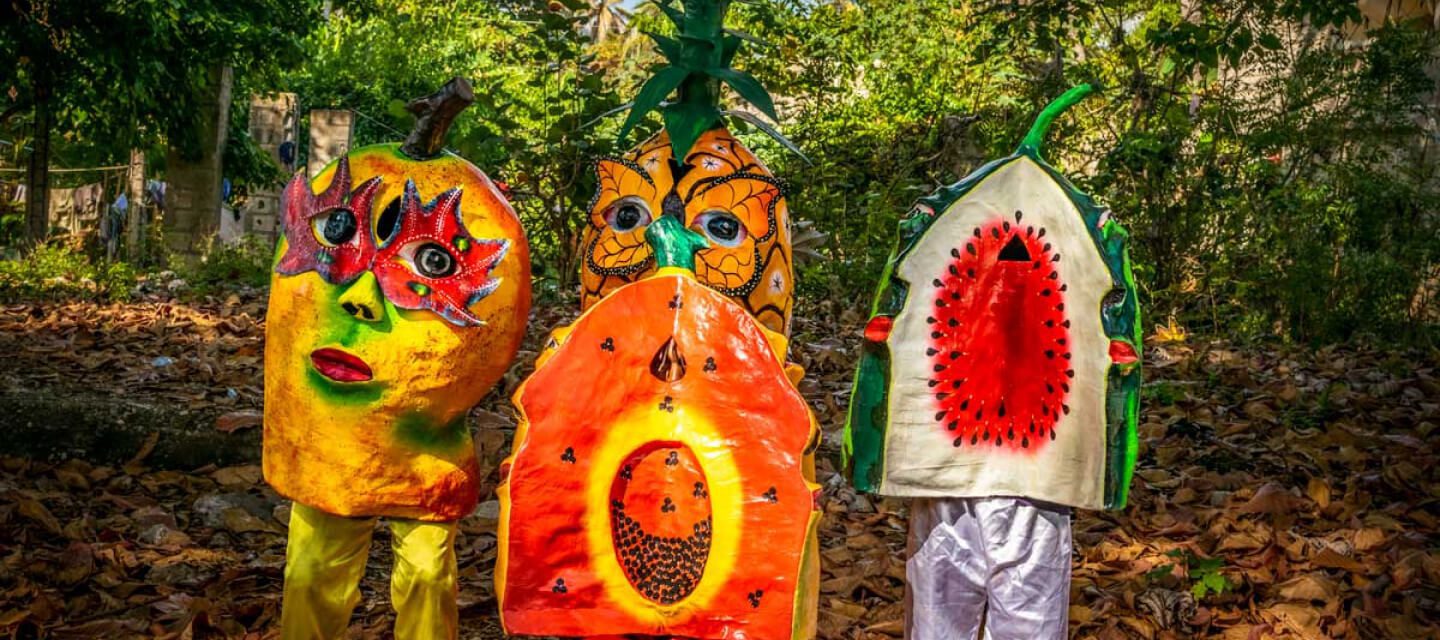
Photo: Jean Oscar Augustin
Meet the Colorful Characters From the Jacmel Carnival
Join us in Jacmel for a celebration like no other, where Haiti’s legends and mystical figures come alive, dancing through the streets in a whirlwind of art, myth, and tradition.
Are you ready for a carnival like no other? One where mythical creatures, rich history, and vibrant costumes collide in a festive spectacle? Then pack your bags and head to Jacmel on Haiti’s south coast, where the city’s renowned carnival awaits.
For many Haitians, the phrase “Lage m pou m al nan kanaval” (I am ready to go to the carnival) rings a familiar tune, as it’s taken from a popular carnival meringue song. But the Jacmel carnival is not your average Mardi Gras. It’s a celebration of Haitian culture and society, expressed through a parade of colorful outfits and mesmerizing paper mache masks.
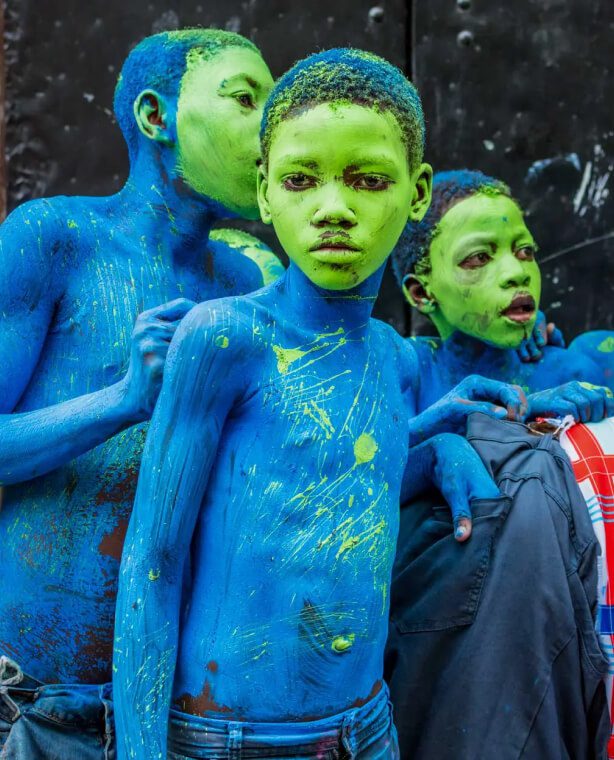
Photo: Jean Oscar Augustin
The city of Jacmel, known as Haiti’s cultural capital, boasts a rich artistic tradition, particularly in paper mache. And the carnival is a testament to this, as it showcases mythical figures from Haiti’s collective imagination, such as the Chaloska, Lanset Kod, and Yawe. But the cast of characters and carnival costumes is ever-changing, incorporating figures inspired by the Vodou pantheon, current events, and notable individuals, making each edition a unique and lively critique of the history of Haiti.
Join us as we delve into the fascinating world of Jacmel’s carnival, where the characters and traditions that define Haiti’s rich history are celebrated in the most original and joyous way possible.
Are you ready? Let’s go!
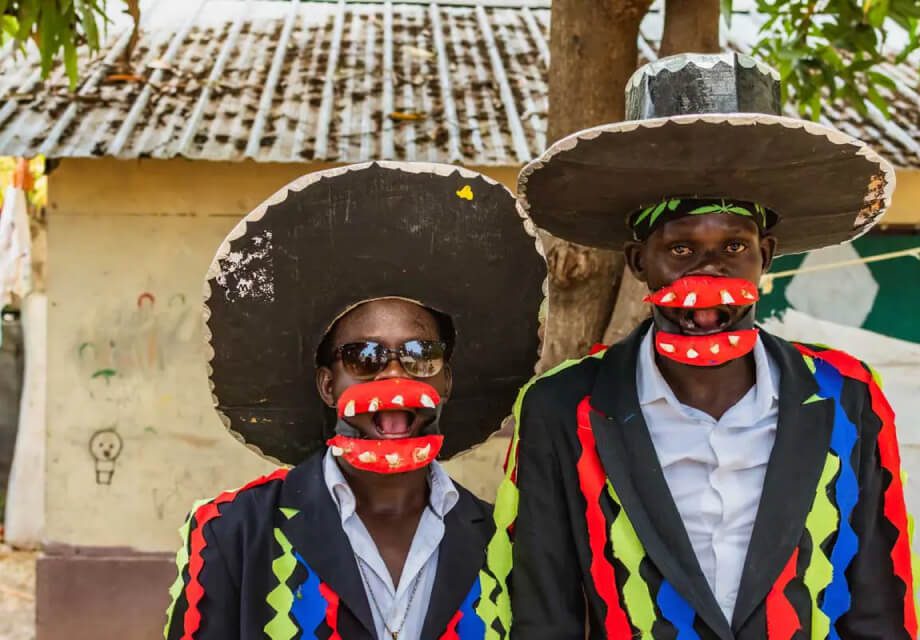
Photo: Jean Oscar Augustin
One-of-a-kind Chaloska
The Jacmel Carnival parade features some of the most intriguing characters and among them are groups of tall, young men dressed in tailcoats and tall top hats. These are the representations of General Charles Oscar Etienne, who was infamous for his cruelty in Port-au-Prince and Jacmel. The general gained notoriety for his acts of violence against political prisoners who opposed the government of President Vilbrun Guillaume Sam.
After the assassination of the president and his devoted general by an angry crowd in 1915, the carnival of Jacmel created the Chaloska character to mock the former general’s striking features, such as his height and prominent teeth. The costume, complete with epaulets, a cap, and an exaggerated set of teeth, serves as a colorful satire of the infamous general.
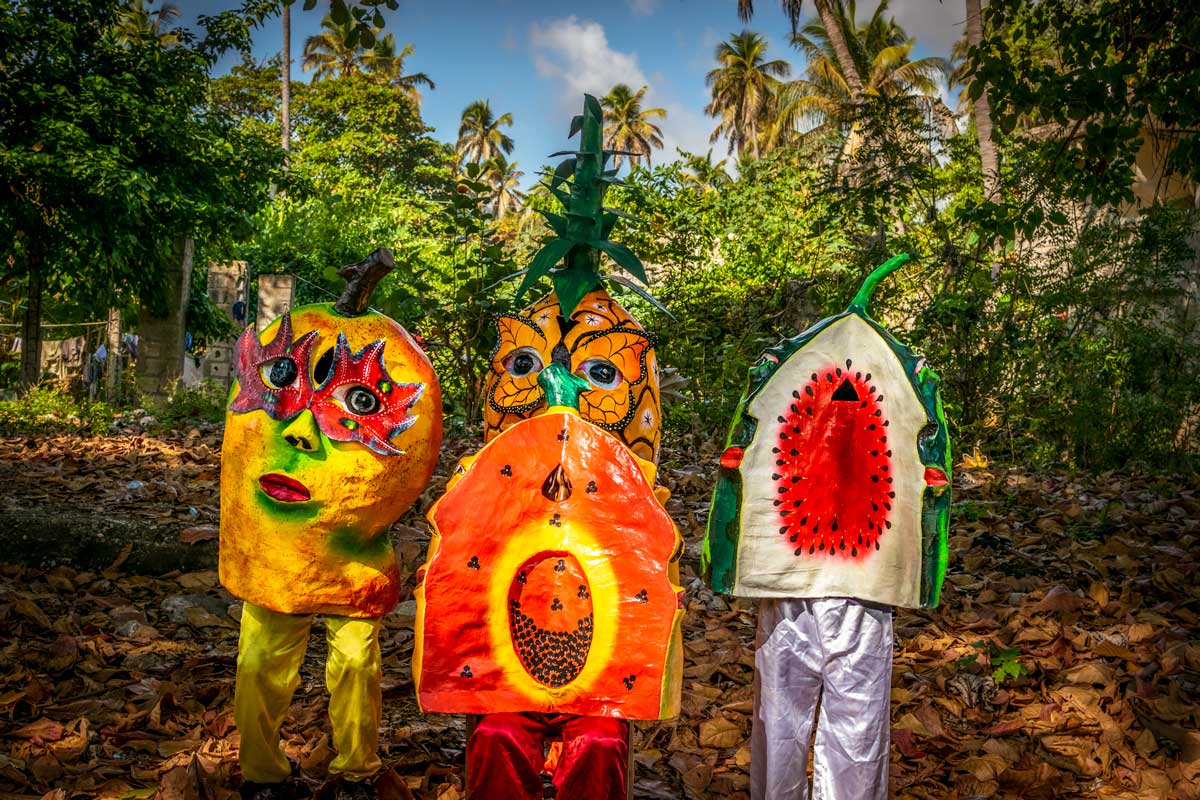
Photo: Jean Oscar Augustin
Carnival Flora & Fauna
Imagine you’re sitting at one of the many Haitian carnival stands, and suddenly you see a giant crocodile head sticking up over the crowd in the parade, a little further on a hibiscus flower appears, you see a rooster that’s your size and dragons, lots of dragons
The carnival parade can transport you into surreal universes when you least expect it. With large masks and costumes depicting trees, tropical fruits, colorful flowers, and animals, the Jacmel carnival celebrates Haiti’s tropical flora and fauna. It’s also a way to preserve a tradition dear to this coastal town, the papier-mâché technique – read more about that here!

Photo: Jean Oscar Augustin
The Lansèt Kòd and Their Pranks
Every Sunday leading up to the carnival parade, you might run into groups of men and women completely covered in a shiny, sticky, blacker-than-black mixture made of sugarcane syrup and charcoal. These are the Lansèt Kòd (rope throwers or Lanceurs de cordes in French).
Sometimes they parade with whips in hand and wear surprising accessories such as multicolored wigs, miniskirts and thongs, or bullhorn attached to their heads and arms. For the carnival novice, they might look strange, scary, or even grotesque. Don’t worry, that’s the point. The origin of this tradition dates back to colonial times, like many other practices in Haitian culture.
These rope throwers are known for their pranks and mischief. If you have the original idea of wearing white for the parade, you may end up with a black handprint on your back!
Follow along in the footsteps of a lansèt kòd group as they run around Jacmel!
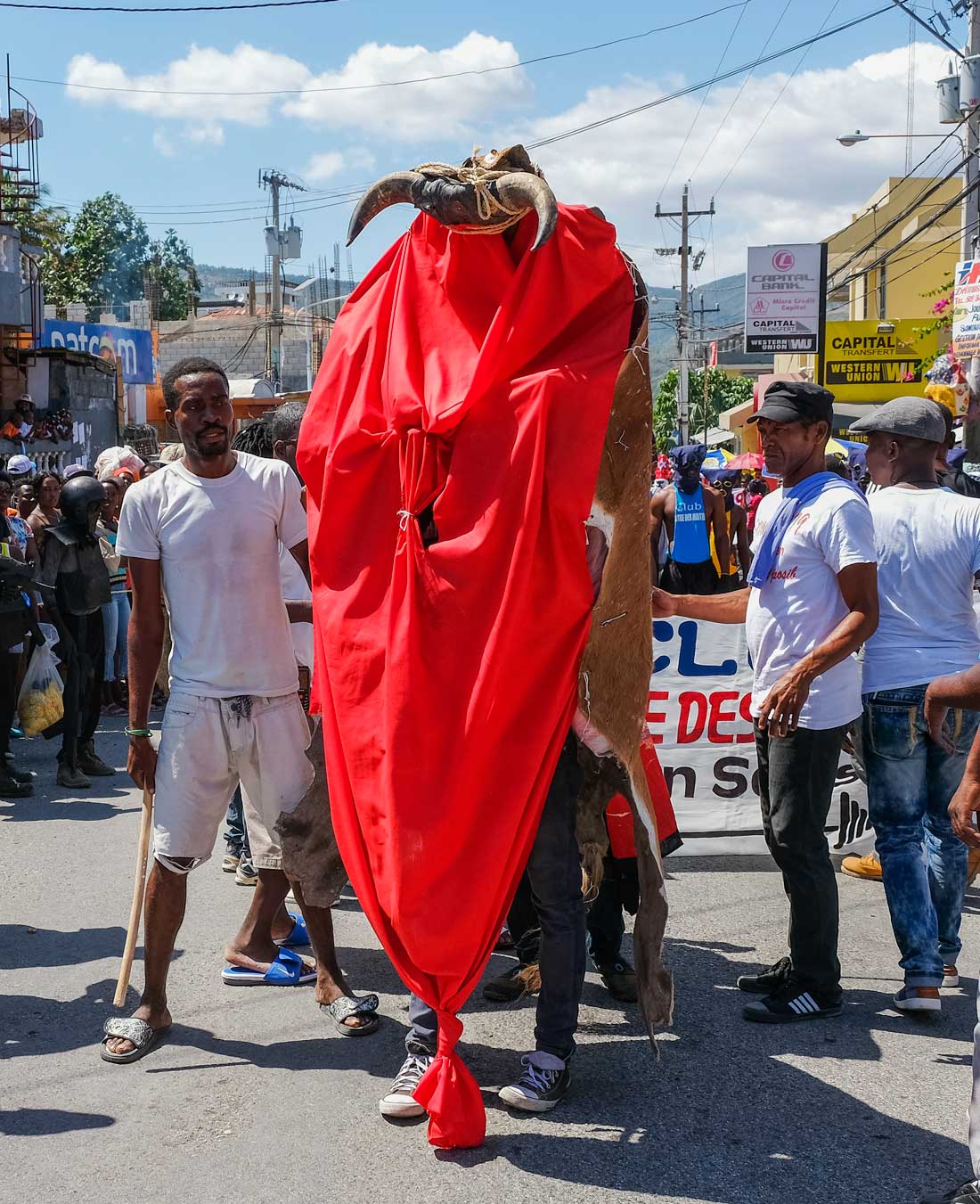
Photo: Franck Fontain
Yawe: A Unique Carnival Tradition!
Here’s another iconic Haitian carnival character found only in Jacmel. The Yawe’s costume is made of horns and fully covered in red fabric with an ox skin on it’s back. It may give you the impression of a bullfighter’s performance as other participants will chase the Yawe while cracking a whip and hitting it on the ox skin.
This tradition recalls the era when buccaneers hunted wild oxen and pigs on the island of Hispaniola. Which is why the Yawe mimics an ox on the run. The name Yawe, which resembles the name of a Jewish deity, is believed by many to have been introduced to the country by the Jewish community of Jacmel.

Photo: Jean Oscar Augustin
Fèy Bannann
The Fèy Bannan is a masked group that captures the essence of both strange and intriguing—dressed from top to toe in dried banana leaves with just a small hole for eyes. Some say that their garb pays homage to the German folk character Knecht Ruprecht, who punished misbehaving children. Perhaps this tradition was brought to Jacmel by the young bourgeoisie from Germany, with the character’s hair transformed into dried banana leaves.
However, the Fèy Bannan may have a deeper message at its core. Another story suggests that this carnival costume was created by a wise farmer, as a satirical critique of the Jacmelian bourgeoisie during a time when their bananas were being exported and bringing wealth only to the rich. The mask serving as a message to the exploiters, a reminder that they have taken everything, and the only thing left is the banana leaves they use to cover themselves with.
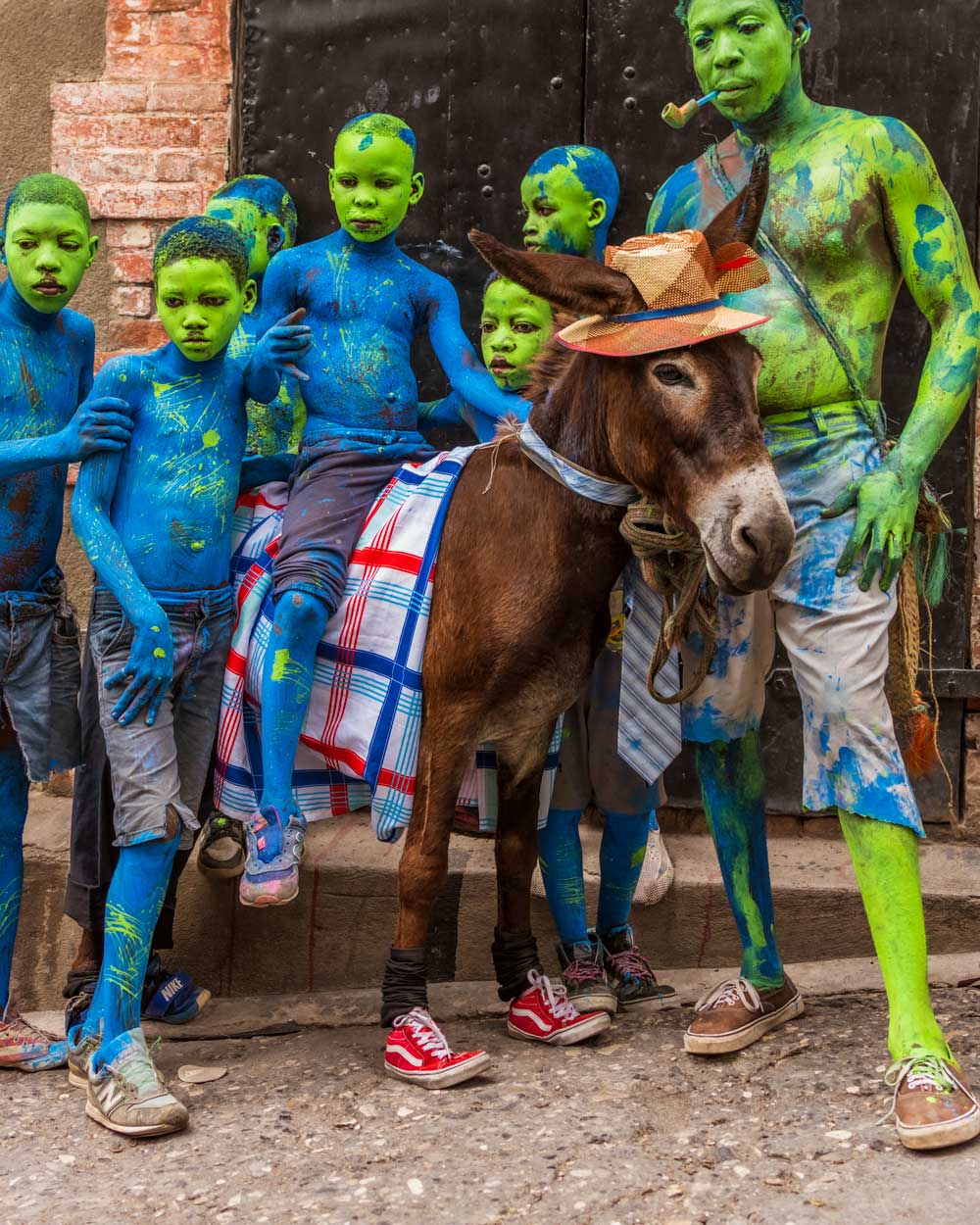
Photo: Jean Oscar Augustin
Ti Brino: The Masked Donkey
Even animals join the festivities at the Jacmel carnival! So don’t be surprised if you see a donkey dressed in converse sneakers and a straw hat. And the craziness doesn’t stop there.
The character known in the city as Ti Brino is followed by an entourage of young boys fully painted in bright neon colors – reminiscent of something straight out of Alice in Wonderland. The story goes that the curious name for this carnival costume is that of the first person who had the original idea to parade a donkey in the carnival.
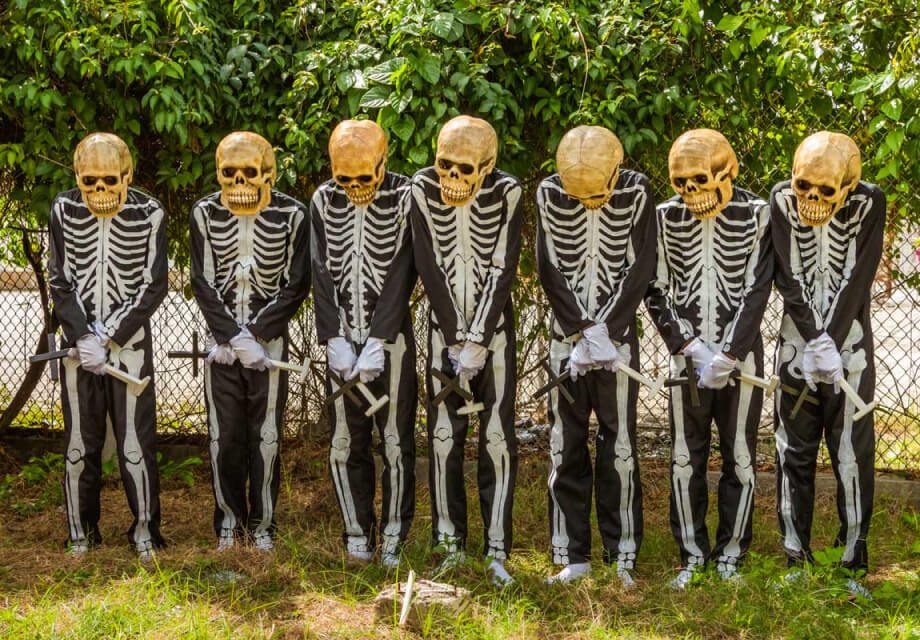
Photo: Jean Oscar Augustin
Enter the Zombies
The Jacmel Carnival is special in its ability to transport you from one world to another in the blink of an eye. The parade characters can suddenly make way for a spooky atmosphere filled with skulls and skeletons. These are the Zombies (zonbi in Haitian Creole), one of the mysteries of Haitian folklore and Vodou that has captured the imagination of people around the globe and fueled incredible and improbable fantasies.
The concept of zombies has its roots deeply ingrained in Haitian culture and predates its appropriation by Hollywood and the rest of the world. Far before it became a mainstream theme in horror movies and video games, zombies in Haiti symbolized the dead who had risen from the grave and were forever enslaved.
Read more about the mythical Haitian zombies here!
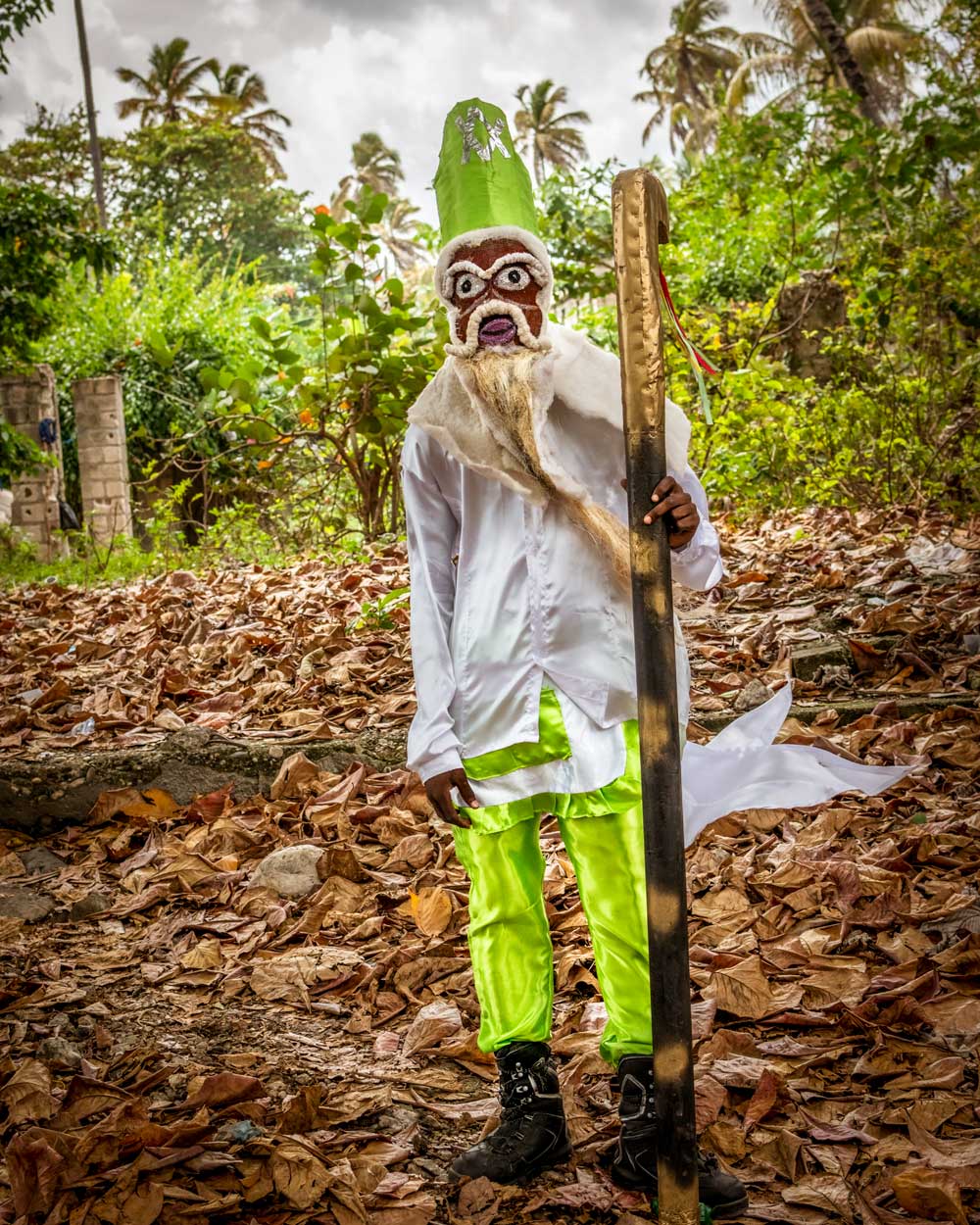
Photo: Jean Oscar Augustin
The Enigmatic Wandering Jew
Get ready to be mesmerized as the Jacmel Carnival unveils one of its most intriguing figures – the Wandering Jew. Dubbed “Papa Juif,” this aged man, with his long white beard and attire reminiscent of biblical patriarchs such as Abraham and Moses, walks majestically down the parade with a staff in hand.
The character of the Wandering Jew is a mystery in itself. How did he find his way to the Jacmel Carnival? His legend casts him as a worldly figure, one who belongs everywhere and nowhere at the same time. This character serves as a reminder of the Christian heritage of carnivals, as evidenced by the presence of other characters, such as angels and demons from the Christian tradition.
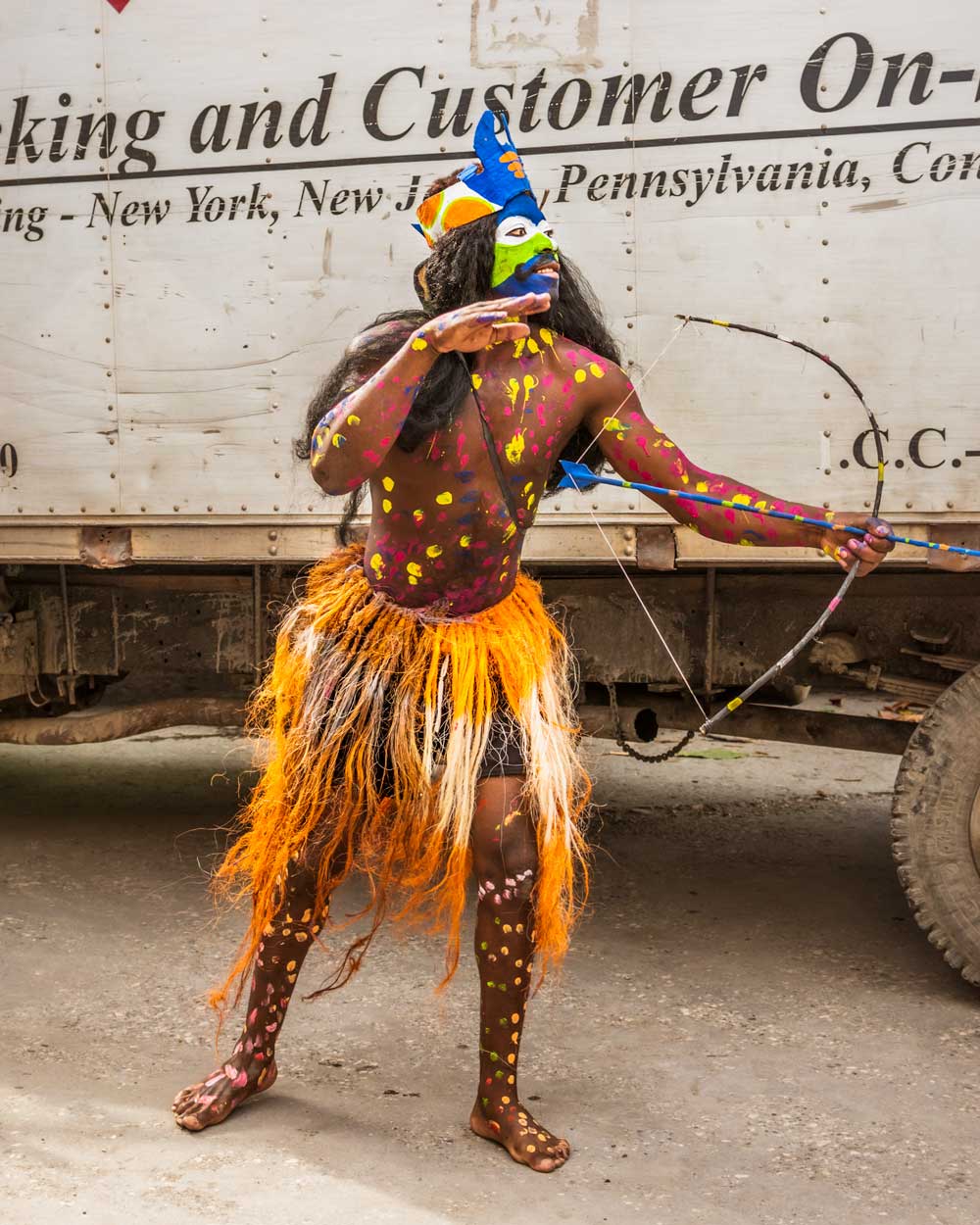
Photo: Jean Oscar Augustin
The Historical Figure of the Endyen
They wear short skirts, feather crowns, and roucou on their faces. The Indian (endyen in Haitian creole) character evokes a part of Haiti’s history – namely, the time when the island was inhabited by the Taino, Arawak, and other Native Caribbean tribes. Although extinct today, you can still see many elements that have remained of these peaceful peoples’ culture, such as their works of art and cuisine. The Haitian carnival honors these people every year through the Indian character.
Among the represented Indians, you can observe the beautiful queen Anacaona, recognized for her beauty and great talent as a poet, or the fierce king Caonabo, known for his bravery in the face of the Spanish invasion of the island. This couple is often presented in the front line of the Indian section of the parade.
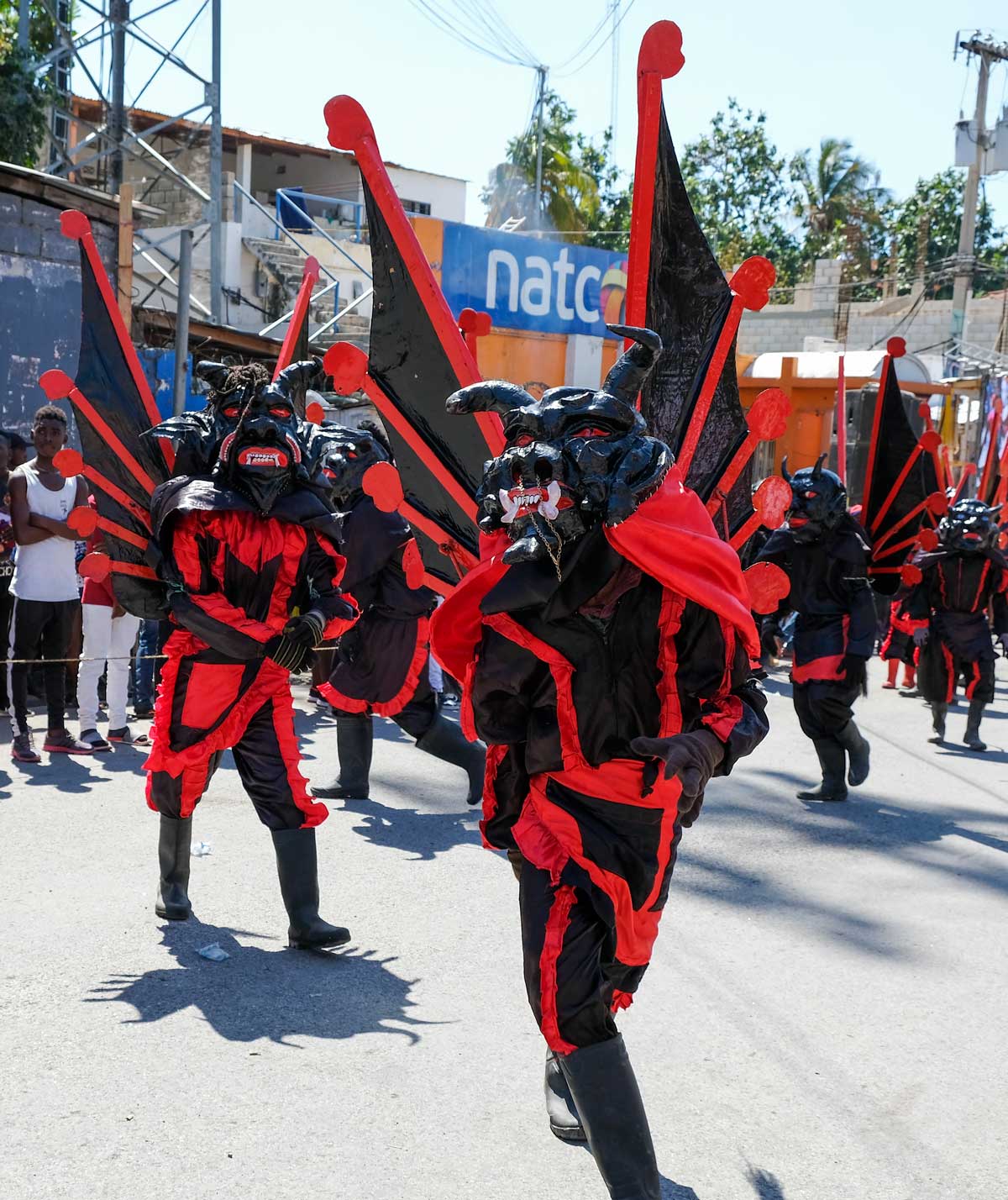
Photo: Franck Fontain
The Intimidating Zel Mathurin
Last up on our list of carnival characters are frightening little devils in brightly colored satin costumes, sporting wooden wings and menacing paper mache masks.
These are the Zel Mathurins. They march in formation and create an eerie atmosphere by clapping their wings to produce a haunting sound, embodying Lucifer and his minions. These figures are inspired by the biblical tradition of hell and usually follow behind the angels in the carnival parade.
So, what are you waiting for? Visit Jacmel during kanaval to get up close and personal with these characters!
Written by Costaguinov Baptiste.
Published February 2023.
Explore Haiti’s Art & Culture

Paradise for your inbox
Get travel inspiration, news, tips and more delivered monthly. We’ll never share your email address or send junk.
[yikes-mailchimp form=”1″]








